10 Cattle Dog Breeds That Can Round Up the Herd in a Flash
Rarely has anyone been able to manage their large herds without the help of trusty farmhands, usually of the two-legged variety but also the four-legged ones. Cattle dog breeds in particular are valued for their fast-as-lightning maneuvering and just as quick instincts.
What is a cattle dog breed anyway? Intelligent? Focused? Committed? All those things! It's not necessarily one specific type of dog (although you'll soon find out one does indeed carry that moniker) but more of an inherent skill set that dedicated training enhances with certain canines. We asked Duane and Dottie Packard, president and interim secretary of the National Cattledog Association for additional insight.
"They're capable of taking direction, yet work independently when they have to. The good ones learn to understand the job you're doing and help get it done, more than just doing what they're told," the Packards say. "The dog may be working out of sight of the handler because of terrain or because they're on the back side of the cattle and they have to be able to work without being told every move to make. They need to react and control the stock."
The Packards say that cattle dogs start training as early as 4 months old. "Usually they're started just going around smaller stock like sheep or goats, but some people will start them on calves instead," they say. "Mostly when they're just getting going, you're looking for the desire to both control and move the stock. Keeping them together and moving towards the handler is ideal."
Some herding dogs are more 'strong-eyed', a communication style that involves a lot of eye contact with bovines and little barking. Others are 'loose-eyed', which means they use more movement and barking. Additionally, while certain cattle dog breeds gather the herd together, a select few are 'drovers'—driving them from place to place.
Here are some of the top cattle herding dogs around the world.
Border Collie
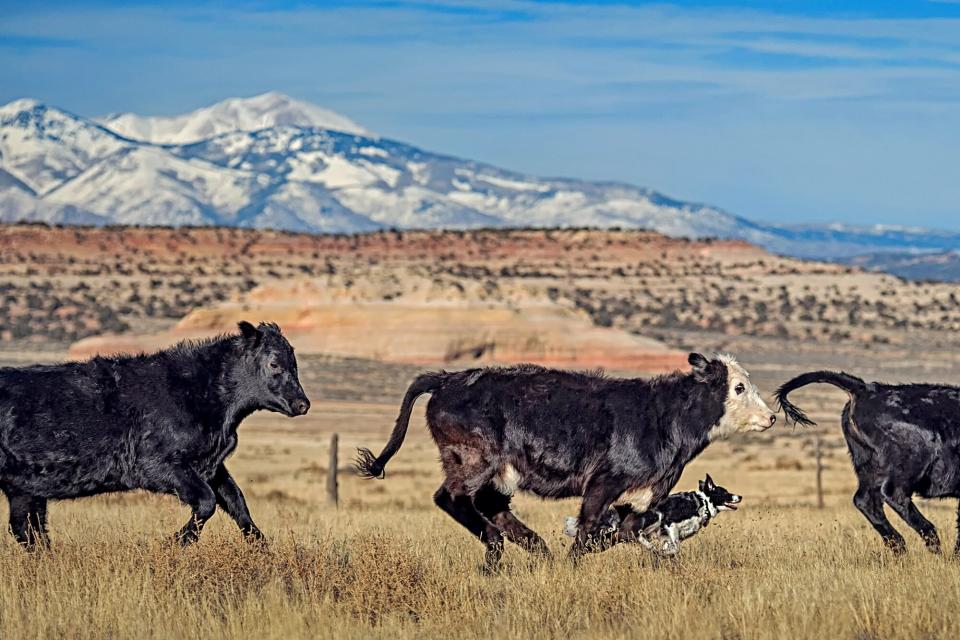
Hillary Kladke / Getty
The epitome of a herding professional, a border collie could train you and me to do the task. Not only one of the smartest dog breeds, but also one of the fastest—easily zipping off at 30 mph! These pups are affectionate with their family, but not lazy porch dogs. Experienced pet parents know that if this Scottish-Welsh wonder isn't moooving cattle around, she needs intense daily exercise and plenty of tricks and agility work to be her most happy self.
Australian Shepherd
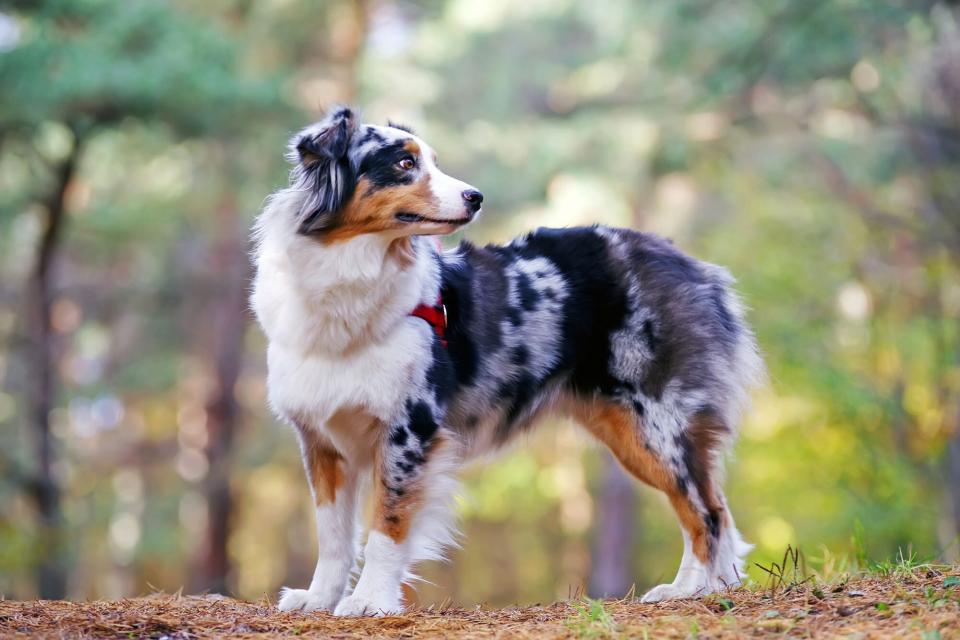
Eudyptula / Getty
You'll have both beauty and brains with an Australian shepherd, as those merle coats and striking eyes draw you into his tantalizing mind. Always eager participants in positive reinforcement training and free with doggie kisses once the workday is done. Here's a fun fact: although Aussies came to the U.S. with Basque sheepherders from Australia, they're not really "Down Under" dogs. But these swift pups are ingrained in the legends of the American West.
RELATED: Border Collie vs. Australian Shepherd: Which Super Smart Dog is Right for Your Family?
Texas Heeler
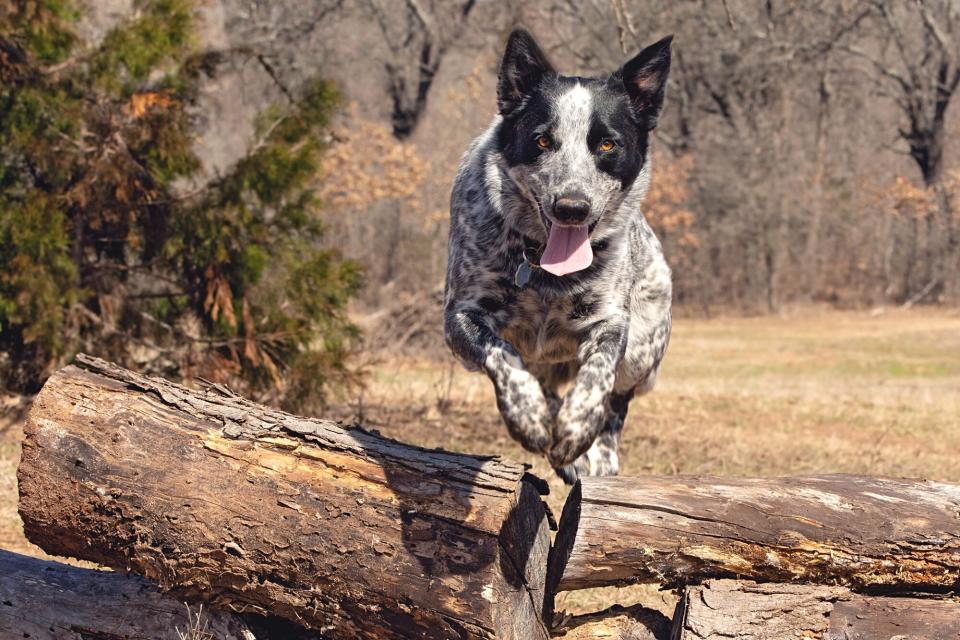
pimmimemom / Adobe Stock If you adopt a Texas heeler, you better be ready for lots (and lots) of exercise. Whether running, hiking, or swimming, they're game for anything that keeps their heart rate up.
The spry Texas heeler is a mixed breed dog—a cross between an Australian shepherd and an Australian cattle dog. Bred specifically for herding, he's a tenacious, whip-smart mastermind who forms a deep bond with his humans. Known for his, um, experimentation, to get what he wants, he might not be the best pet for a first-time dog owner. Consistent attention to improving cue responses keeps this energetic brainiac in top form when he's not on the range.
Australian Kelpie
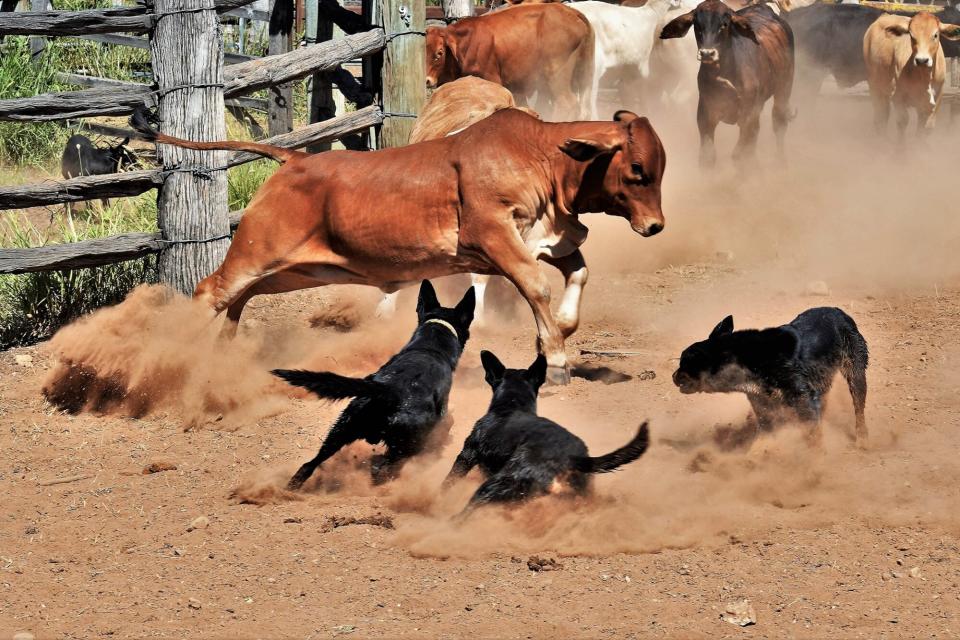
Renee / EyeEm / Getty
A prized sheepherder in her native country, the Australian kelpie is also one of the top cattle dogs in the U.S. Nimble, brilliant, and full of enthusiasm, if she's not with the herd, let her do something equally exciting and active, such as flyball, dock diving, or agility training. Not one to be content with just the backyard, a kelpie expects wide open spaces to roam—and will do so if fencing isn't up to snuff, but does stand still for ear scritches and snuggles.
Australian Cattle Dog

Paulo Hoeper / Getty
To become the namesake of the task, sleek Australian cattle dogs are the crossbreed intelligent offspring of British Smithfields, dingoes, Scottish Highland collies, kelpies and, ensuring a personable and affectionate canine companion, dalmatians. The Australian stumpy tail cattle dog is a distant cousin. Quite a pedigree, but a solid reason why he's master of vast grasslands in the sunburnt country, where a typical cattle station can be millions of acres and home to a herd of thousands—and he's right at your heels, anticipating a great day together.
Bouvier des Flandres
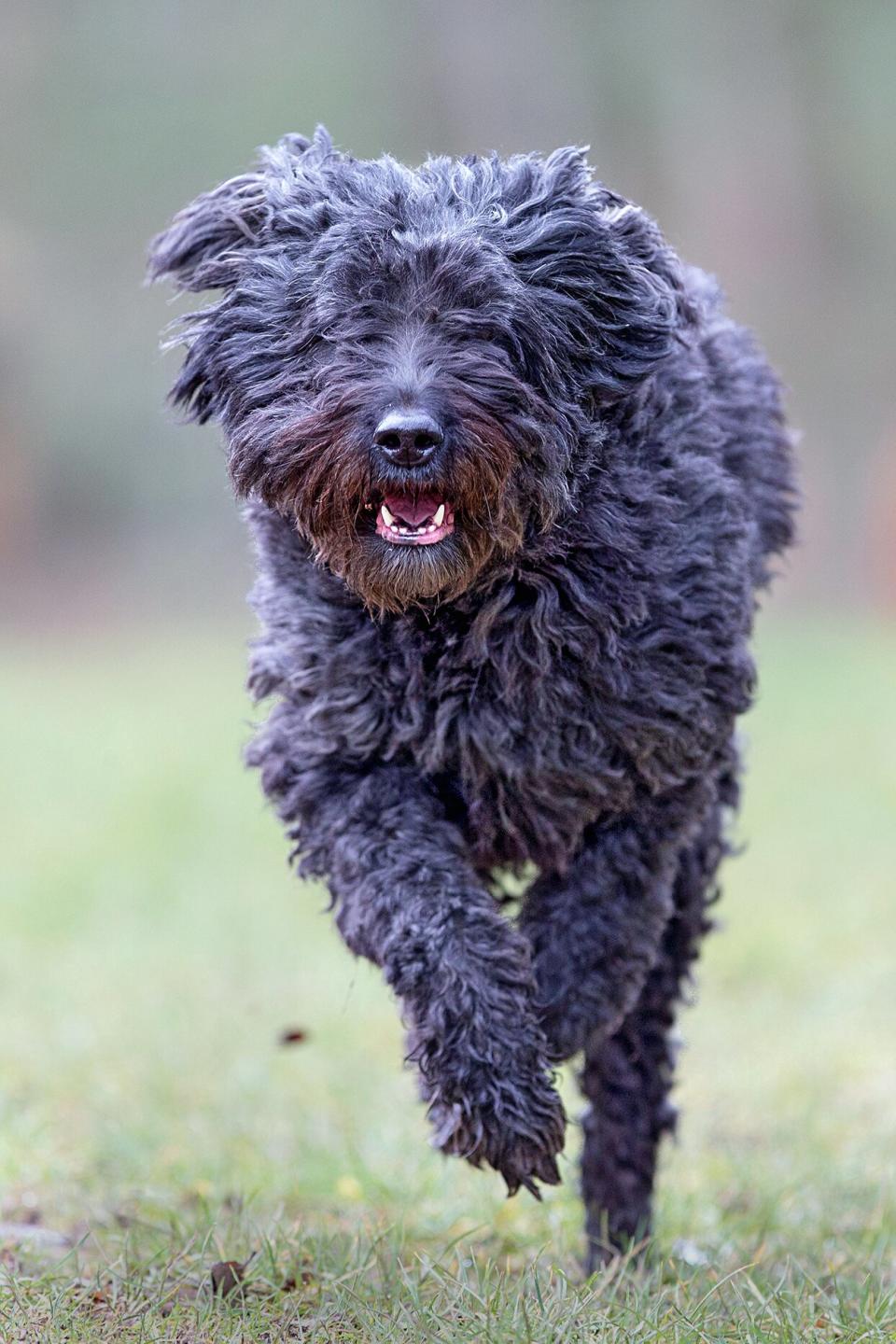
Produced by Oliver C Wright / Getty Big as they are, Bouviers have a reputation for being bouncy. The "Bouvier bounce" comes from their herding days, and they can reach heights of up to six feet.
The Bouvier des Flandres, which means 'cattle herder of Flanders' in French, is a fleet-footed, independent pooch with purpose. And bouncy! These dogs actually bounce to move herds into place. Her position on European farms has downsized quite a bit, but because of sharp senses, she's made a successful transition into search and rescue and service dog opportunities. Oh, you'll spend time grooming, but her sensitive nature and response to gentle training makes her a unique pet for active people.
RELATED: 11 of the Best Hiking Dogs Ready for Outdoor Adventures
Cardigan Welsh Corgi
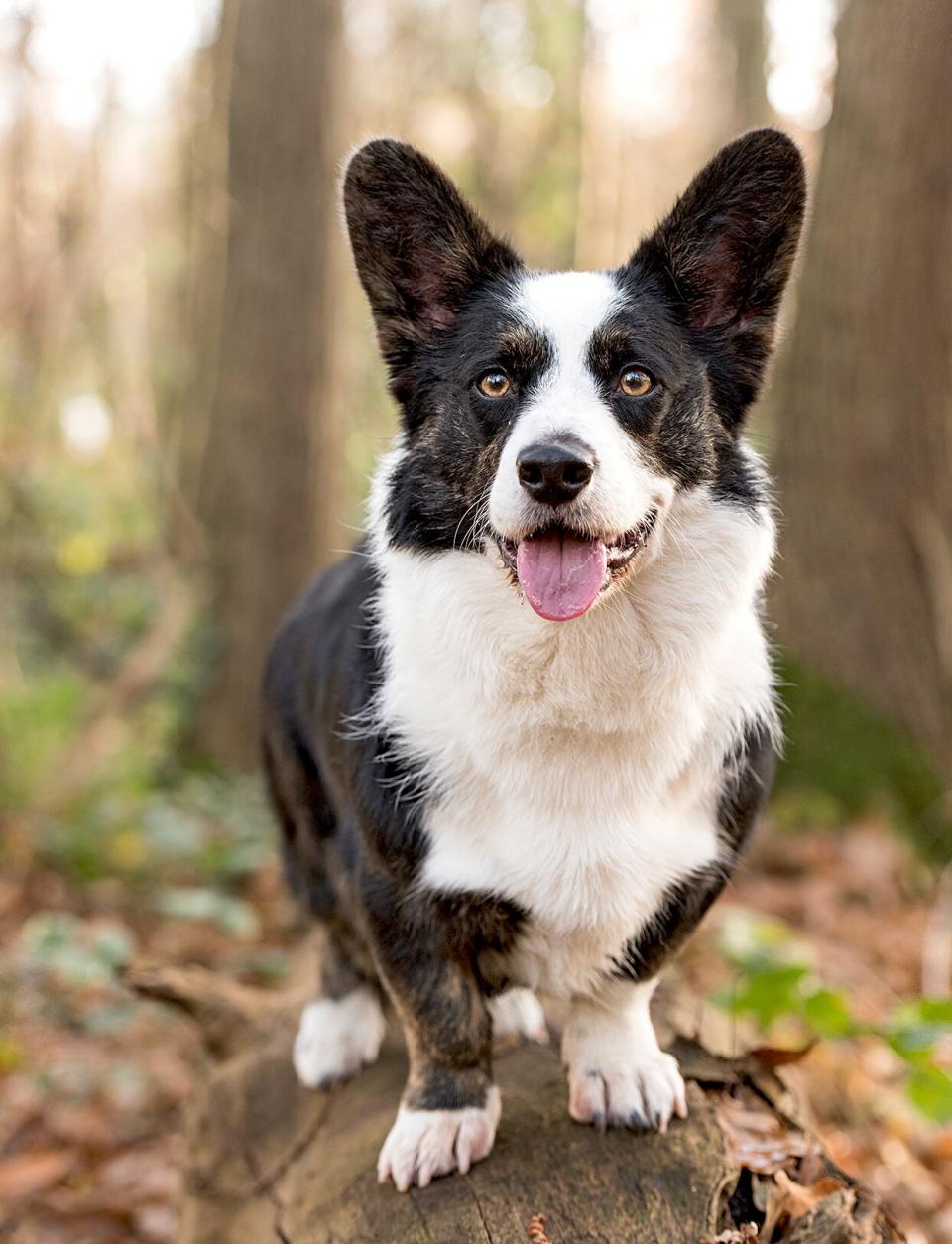
Kurt Pas / Getty Corgis have a natural smile and a face that seems to say, "Hi! How are you?"
Who has a cute corgi butt and a tail? This guy! Hailing from Wales, the Cardigan breed takes advantage of his sturdy yet agile low-rider status to avoid pesky cattle hooves kicking about in the pastures. His German heritage means he's eager to stay engaged, so if there aren't any animals to corral, puzzle games and other interesting activities—corgi basketball, anyone?—help you make the most of his intelligence and sparky personality. Both of you will be entertained for hours!
Pembroke Welsh Corgi
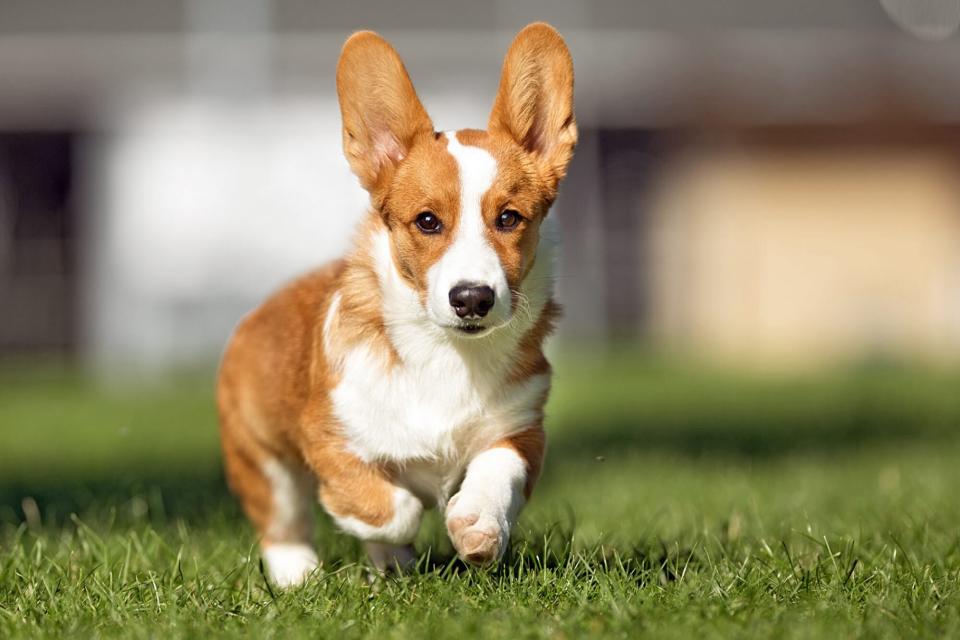
Bigandt_Photography / Getty
And if you're all about that butt, 'bout that butt, then the more far Southern Wales corgi is for you. Although the Pembroke breed courts high favor with Queen Elizabeth II, she's far from snooty (the dog—we can't really speak to Her Majesty's personality). This corgi is more Nordic than German but still considered a prime cattle herder and not afraid to get her paws dirty. If you don't have bovines to round up, keep your scampering smart pup engaged with outdoor toys that let her show off and burn it off!
Swedish Vallhund
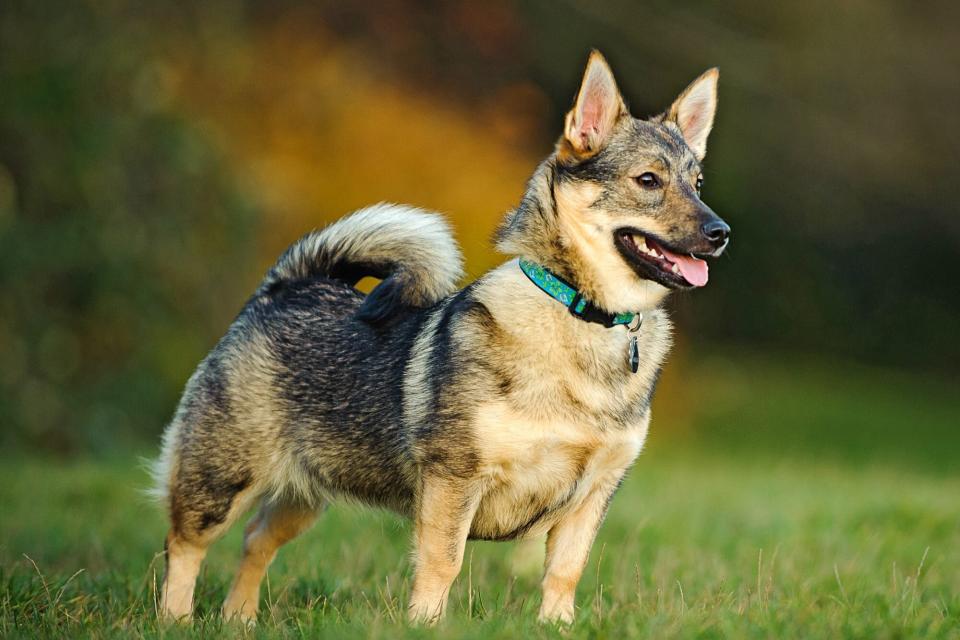
Tara Gregg / EyeEm / Getty Centuries ago, corgis intermingled with Scandanvian spitz dogs to create the Swedish vallhund. Today, vallhunds are still commonly confused with their corgi cousins.
Is this handsome hound a corgi, too? No, just a distant relative. The Swedish vallhund is so important to the country's heritage, he's an official national dog breed. Quite revered for his cattle-herding abilities and companionship, many Viking warriors were buried with these hardy and diligent canines. Attentive to humans, not only is he a trusty modern working dog but also a true companion for just about any activity you want to do. They do tend to bark (have to get those large animals in place somehow!).
Spanish Water Dog
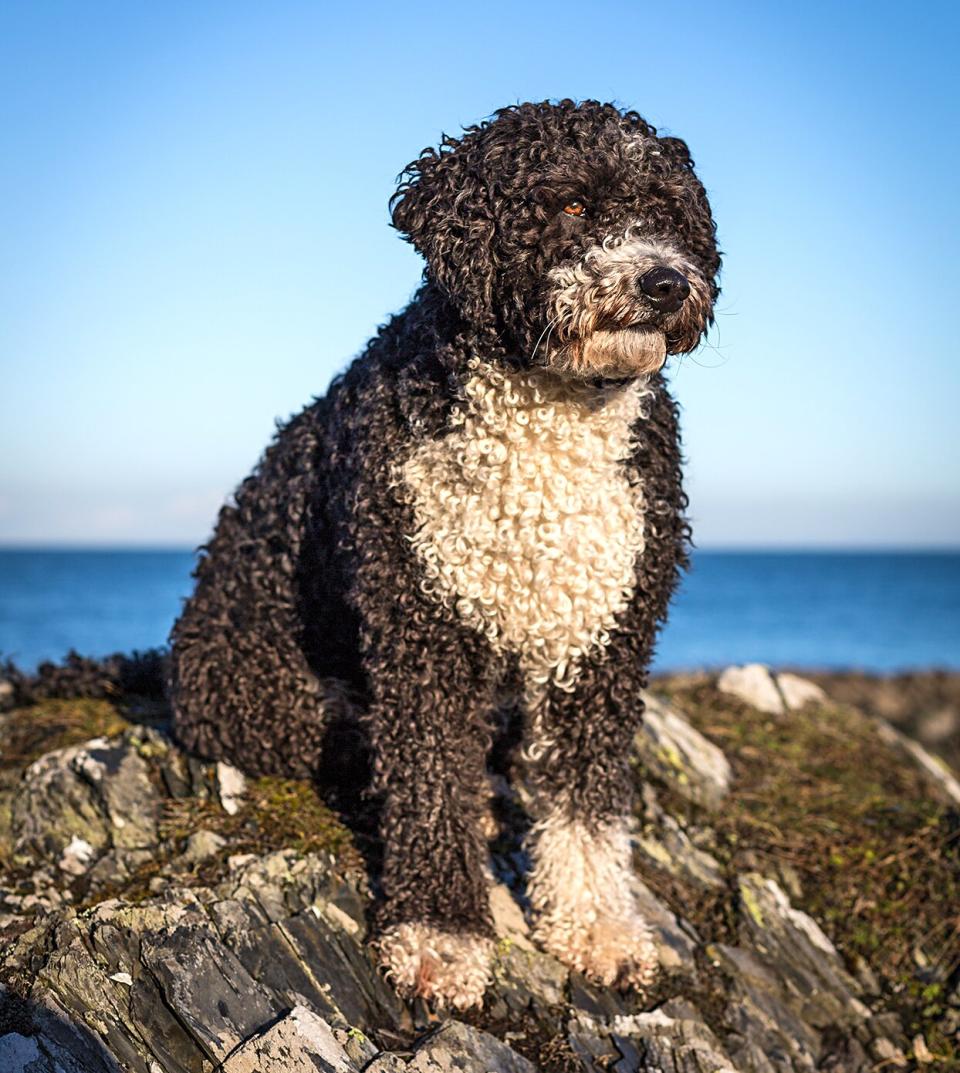
Daz Stock / Shutterstock
Always ready to run and especially swim, you don't often think of Spanish water dogs herding cattle, but this is a multi-talented pooch! In central and southern Spain, they roam the countryside with their herds and flocks, but in the northern part of the country, they work alongside fishermen. A rare breed to find in the U.S., she fits in well with a family of adults and older children who can keep up with this bright, active pup so long as they provide loving boundaries—she might be a teensy bit mischievous if not.
The obvious common denominator between cattle dogs is they must go-go-go. They're hard workers and will be happier with something to do. For potential pet parents who are enamored with these breeds, the Packards stress the need for mental and physical stimulation. "Since working dogs are bred for actual jobs, they usually don't make very good pets unless you have a pretty active lifestyle and give them outlets for their drive and energy," they say. "If they're not given that, they can get weird and quirky."

